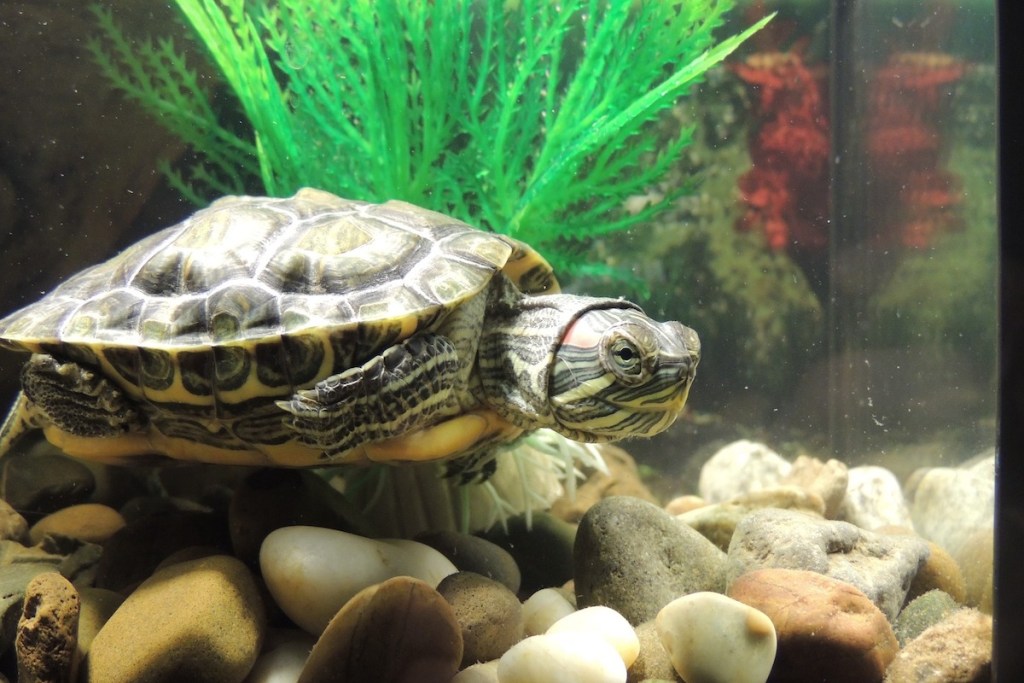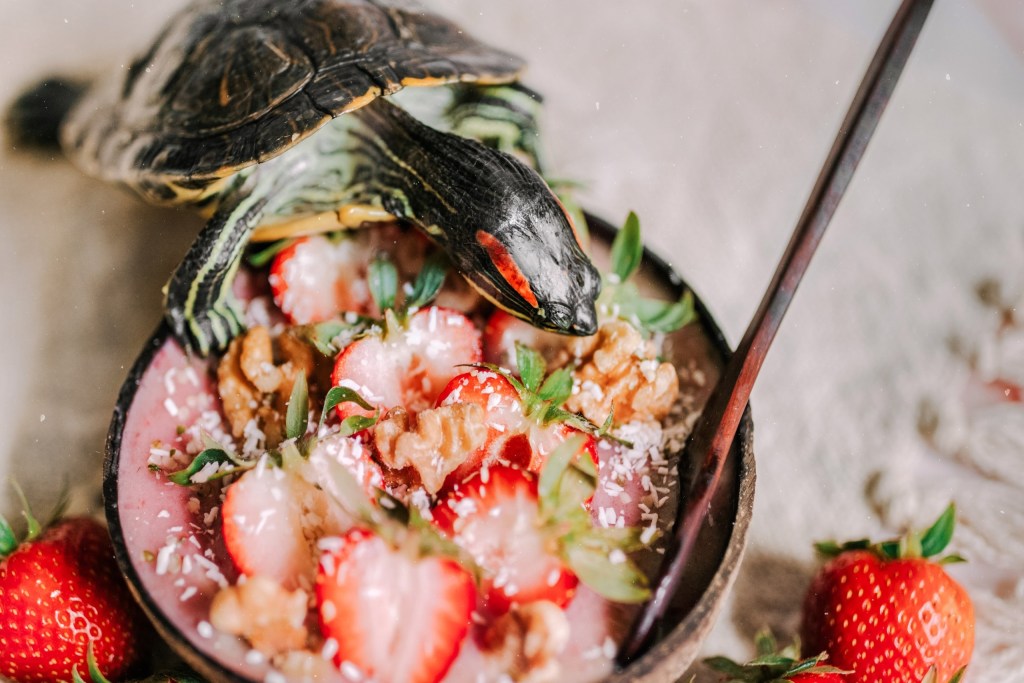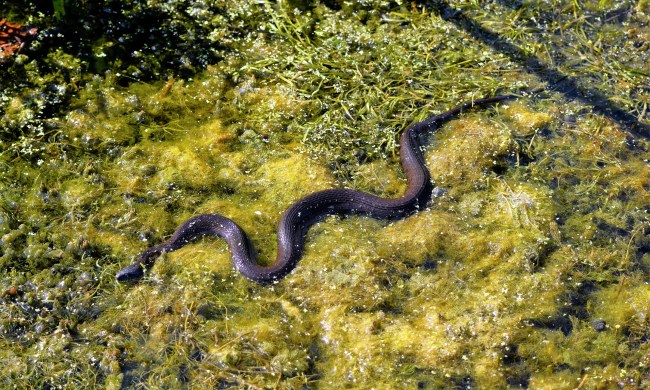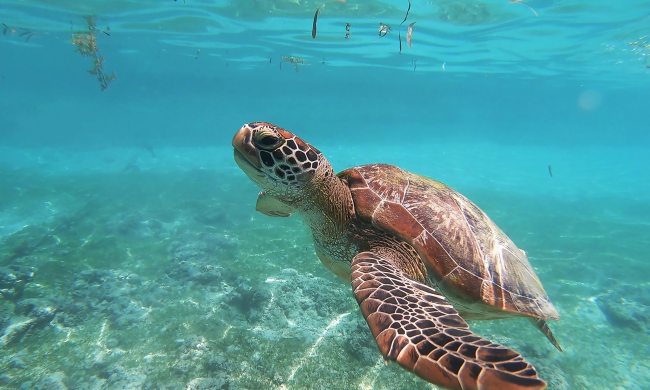Your cute red-eared slider will entertain you endlessly if you keep her happy and well fed. While turtles are mostly a hands-off pet, feeding gives you a chance to interact with her and watch your pet munch away excitedly. Turtles are generally omnivores, which means she’ll require a varied diet consisting of both protein and plants. By feeding your reptile the staples she needs, you also get to include fun treats throughout the week, keeping things interesting for you both.

Where should you feed your turtle?
Before we even get to your turtle’s dietary needs, you need to figure out where and how to feed her. Aquatic turtles, like the red-eared slider, live almost entirely in water. Your tank should be filled nearly completely with water but with enough sunning areas for her to get a break from all the swimming. These turtles need to eat in the water, too, and unfortunately sliders aren’t known for their table manners. Many owners choose to have a separate housing for feeding as this can reduce the number of cleanings and water changes needed for the main tank. When taking your reptile out, you’ll also get the chance to give her a look over and spot any issues early. If this doesn’t work with your setup, remove any excess food immediately after mealtime to keep bacteria and dirty water out of your tank.
What can you feed turtles?
Although most sliders eat a bit of everything, you’ll predominantly need the basic food groups: fish and krill, greens, and insects. Commercial pellet food will keep her satiated, but mixing up food groups improves health.
- Fish and krill: Of course, in the wild, turtles catch all their prey since they don’t have you to grab food for them, and they love to hunt down their meal. If you’re too squeamish for this, stick with frozen or freeze-dried shrimp, fish, or krill. However, live feeder fish can present her with something exciting to break up the day. Select your food very carefully and never catch or pick anything from outdoors. Wild-caught fish can carry parasites that will harm your turtle. Note that too much of even the safe version of these foods, especially extra-fatty ones like goldfish, will cause her to pack on the pounds, so limit feeder fish to once or twice per week.
- Insects: Snails, crickets, and worms can work for an everyday meal when fish isn’t on the menu.
- Dark leafy greens: In addition to live animals, your aquatic pet will enjoy plants, especially ones that would grow in her natural habitat. Dark leafy greens like kale also make for a great snack. Unlike with your feeder fish, it’s okay to leave some aquatic greenery around for her to snack on between meals as long as she’s not overeating or making too big a mess.
- Certain fruits and veggies: To spice things up, mix in carrots and squash during mealtimes. Remember, turtles can eat both the carrot top and root. Lastly, fruits such as berries will be a welcome treat to your little omnivore, but should be given only once a week or less as a special treat.

What can’t you feed turtles?
While some human food will give her a thrill, you should avoid certain pantry items. Specifically, she can’t eat any raw meat and should only eat cooked meat like beef or chicken occasionally. You can skip this, too, if it’s making too much of a mess. Similarly, iceberg lettuce does not count as a dark leafy green since it’s mostly water. It’ll fill up her stomach but won’t provide enough nutrients. Watch for signs of diarrhea or other bathroom problems and adjust her menu accordingly.
While your red-eared slider won’t live as long as a tortoise or sea turtle, owning any reptile with longevity means commitment. You also should prepare to adjust feeding and housing as your pet ages. While a baby might prefer more fish and bugs, you’ll notice her hungering for extra veggies as she grows up. Older turtles will begin to eat a bit less and may need to be fed a full meal only every other day (keep some snacks on hand, though). Now that you know what to feed pet turtles, you can make sure your animal stays healthy and satisfied.



